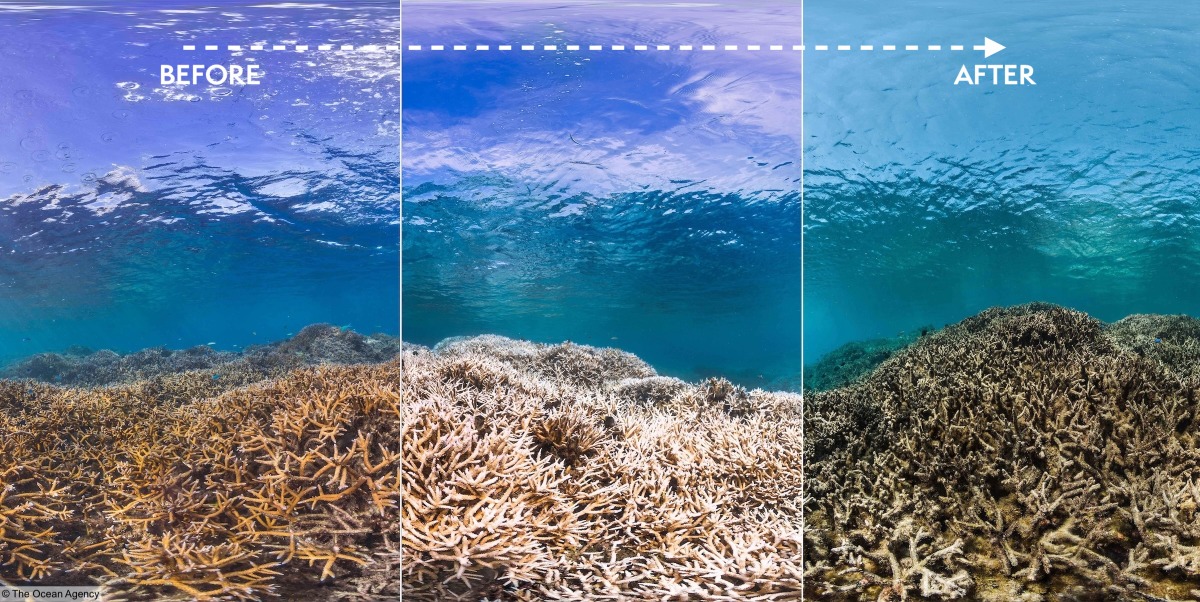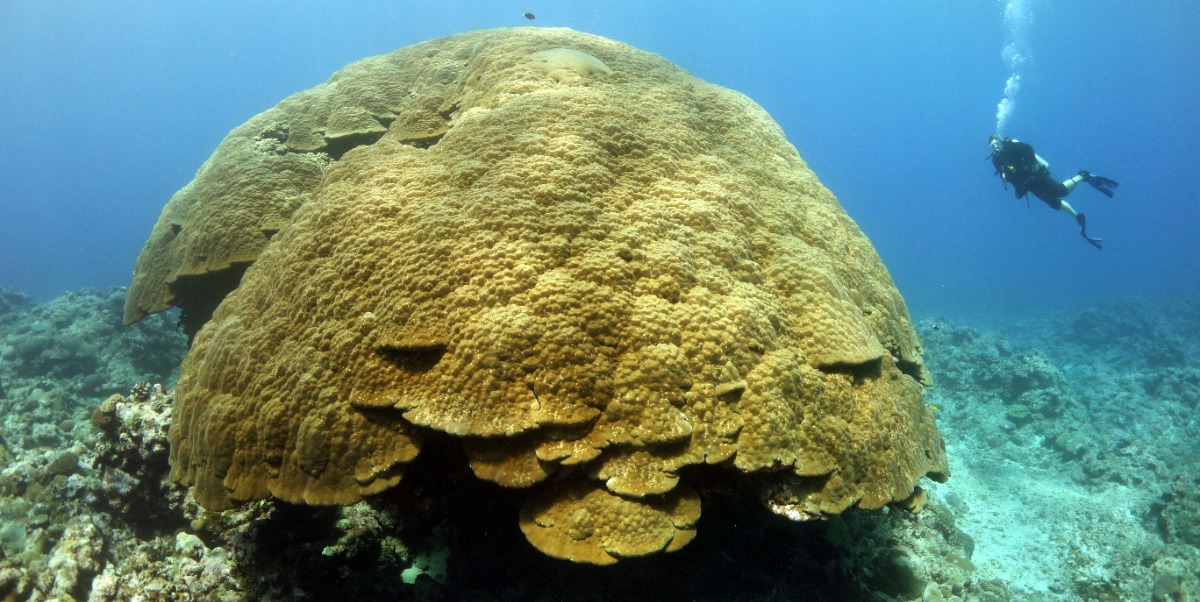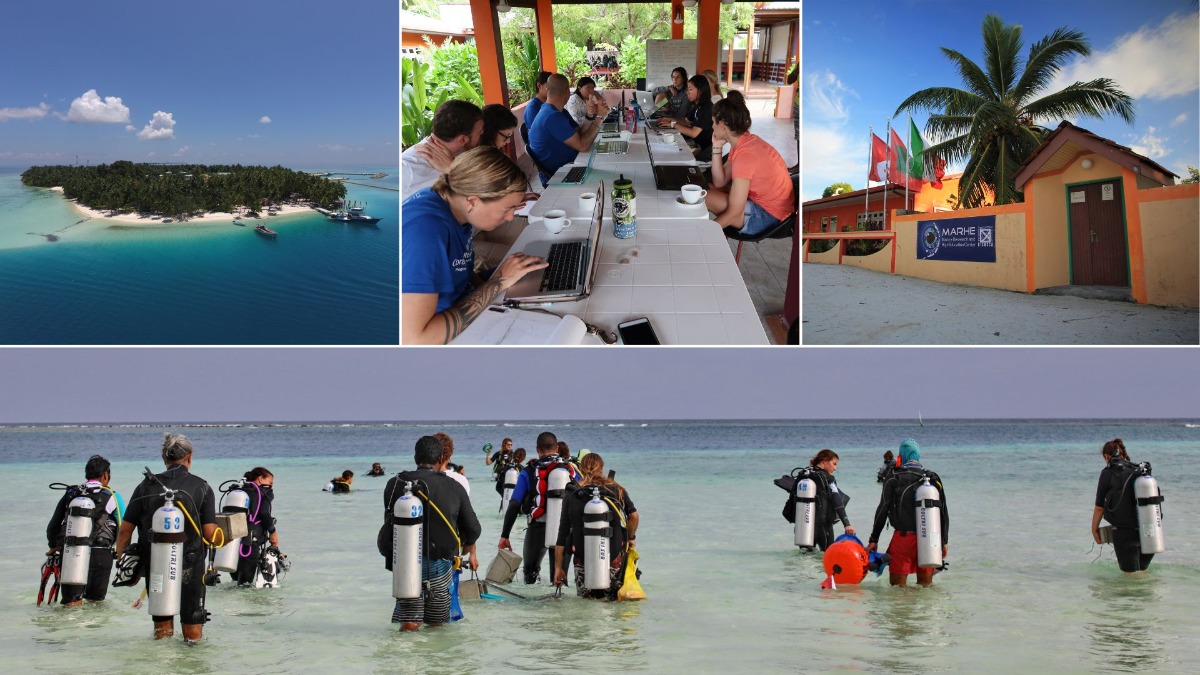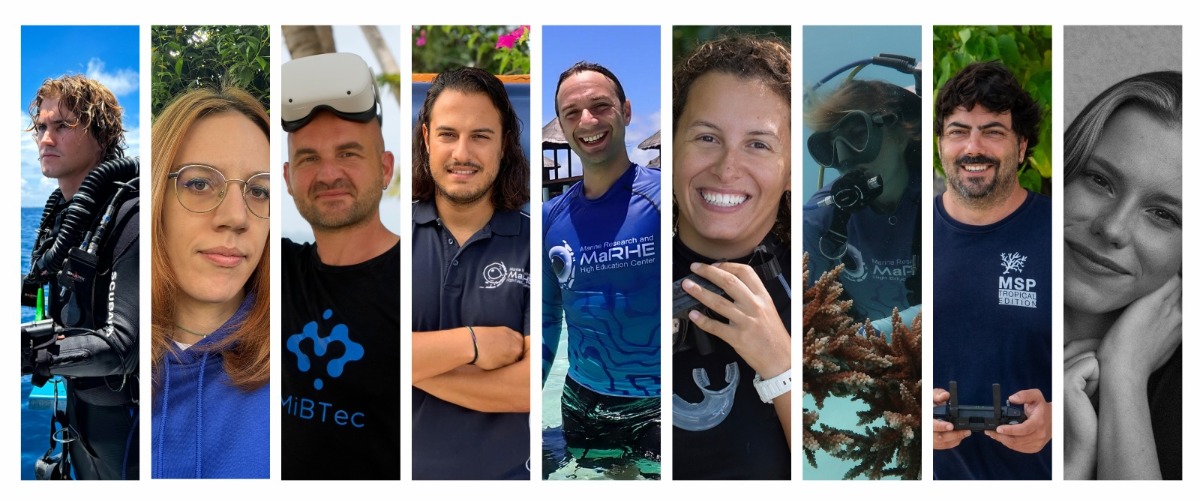

by: Team Map the Giants | data 13/05/2024
***UPDATE***
We have reached the first goal! THANK YOU to each and every one of you! The crowdfunding doesn't stop here: we have set a second, perhaps even more ambitious goal: to reach €15,000, to offer a research opportunity aboard the scientific expedition to two young researchers. It's happening, help us achieve this new milestone as well!

!!!Update!!!
10,000 Thanks! We have reached the first goal of our fundraising campaign! THANK YOU all for your generous support!
With your contributions, we have already begun planning the first scientific expedition. The crowdfunding doesn't stop here. We still have time to reach our SECOND GOAL: €15,000.
With an additional €5,000, we will provide:

A SERIOUS PROBLEM
Have you been fortunate enough to see a thriving coral reef bursting with life? If not, you might risk never seeing one…
Corals are colonial animals, so many small polyps resembling upside-down jellyfish. Together they shape tropical seas by forming structures visible even from space: coral reefs. This is one of the most important marine ecosystems on our planet. Covering only 0.1% of our oceans, they host more than a quarter of all known marine species, protecting coasts from erosion and sustaining the livelihoods of nearly a billion human beings.
These fabulous organisms grow very slowly, between 1 and 10 cm per year, and unfortunately, they are threatened by rising water temperatures. Heat makes them very vulnerable and therefore corals are at risk of extinction.
Not only ocean warming, which causes corals to lose their colour an ‘bleach’, but also human impact, pollution, diseases, and predators are decimating them!
Did you know that to date we have lost 50% of the world's coral formations due to climate change, and that we risk losing the remaining 50% in the coming decades?
,Currently, corals around the world are undergoing one of the most severe bleaching events in history, with potentially dramatic consequences. Can we do something to protect them?
 THE IDEA
THE IDEAAmong the most at-risk corals, there are some that, for truly mysterious reasons, have managed to survive for centuries and reached incredible sizes: GIANT CORALS. Huge colonies, the size of a bus, several buses stacked, or even more.
From a natural point of view, they are the marine equivalent of Redwood, the largest trees on Earth. Like them, they hold unique information about climate, environment and biodiversity, and their disappearance would be an immeasurable loss. The GIANTS are corals that have managed to withstand any past disturbance, seem able to withstand present stresses, and could reveal the secrets to saving coral reefs in the future. They are more than just rare specimens; they are natural time machines with inestimable value.
Could you ever accept losing the tallest tree on Earth? If the answer is no, then you would probably not accept losing the largest coral either!
Who are these corals?, Where are they? How many are there? And above all how big are they? These are some of the questions we need to answer to be able to PROTECT them.

Wendy Cover/NOAA, CC: Public domain
Map the Giants is a project that aims to study and safeguard the largest coral colonies in the world, starting from the Maldives. The campaign's goal is to raise the funds needed to finance a scientific expedition to explore the most remote atolls in the south of the Maldives. Indeed, these areas, still partially unexplored, seem to have the characteristics suitable for hosting the last specimens of giant corals.
Furthermore, we don't just want to find them, but we also want to study them. With your funds, we commit to:
• map and identify them at the species level,
• measure them and establish their conservation status
• develop 3D reconstructions and estimate their age
• conduct awareness sessions for the local community and the tourism sector
But we don't want to stop there... having already obtained all the research permits to study them, we hope that their discovery will allow us to change the narrative with which we conserve and protect coral reefs. We would like to enhance them as new symbols of conservation, recreating the same feeling we get when we look at a centuries-old organism. We want to turn them into MARINE MONUMENTS and bring as many likeminded people, just like you, closer to our common goal of protecting our seas.
 YOUR CONTRIBUTION - THE BUDGET
YOUR CONTRIBUTION - THE BUDGETWe ask you for a small contribution that will allow us to achieve a great goal, a GIANT goal, through the organization of a one-week scientific expedition to explore the remote atoll of the Maldives with a team of four people, including a PhD student and a master's student.
We are fortunate to count on the University of Milano-Bicocca as our primary supporter, alongside you. The University believes in the project and has therefore decided to support us as a co-financier. How? Upon reaching the first 5,000 €, the university will immediately donate another 5,000 €. In practice, your help, your donation is worth DOUBLE!
Your support will provide funds for:
● the purchase of 1 GPS
● the purchase of 2 Underwater lasers for measurements
● the purchase of 1 Camera + underwater housing
● the purchase of 1 drone to monitor the lowest coastal areas
● the maintenance of the project's website
● a scientific expedition for 4 people for 1 weeks
The University of Milano-Bicocca is operateing a research center on a Maldivian island, the MaRHE Center, since about 15 years now. We have always worked in coral environments, studying the health status of corals and the impacts related to humans. We have seen these environments change, worsen, becoming only the shadow of the wonder they could be.
We are witnesses to the impact of humans on nature and we want to act, we must act... NOW!
First of all, we want to be positive and send positive messages. We still have time to do something, to help nature resist.
A first step could be discovering GIANT corals and turning them into MARINE MONUMENTS. By demonstrating the value of what we could lose as a result of our careless actions, we can drive a positive change towards protecting the marine environment.
We are convinced that these unique organisms, the coral GIANTS, can become heroes of the sea, symbols of conservation, bringing more and more people to understand the importance of oceans and the beautiful creatures that inhabit them.
NEXT STEPS
Help us reach our first milestone of 10,000€. It's an important step that could be the beginning of something even greater until we reach a dream, we have tucked away. It's too early to reveal it now, but as they say... dreams can come true!
TEAM
We are a team from the University of Milano-Bicocca composed of professors, researchers, doctoral students, and undergraduates who love nature, the oceans, and are passionate about their conservation both in Italy and the Maldives.
We are many, all dreamers, convinced that unity is strength.
• Andrea Parmegiani
• Anita Casati
• Alessandro Gabbiadini
• Jacopo Gobbato
• Simone Montano
• Federica Siena
• Inga Dehnert
• Luca Fallati
• Jana Pažin
If you believe in u and it happens... hopefully we'll find the largest coral in the world... and this THANKS TO YOU!!!!


Siamo un team di ricercatori, dottorandi e studenti che ama la natura, gli oceani e tiene a cuore la loro conservazione. Siamo tanti, tutti sognatori e convinti che l'unione faccia la forza.
• Simone Montano, team leader, Ricercatore in Ecologia presso il dipartimento di Scienze dell'Ambiente e della Terra e vice direttore del MaRHE Center, Università degli Studi di Milano-Bicocca.
• Federica Siena, dottoranda in Marine Sciences, Technology and Management, Università degli Studi di Milano-Bicocca.
• Luca Fallati , Ricercatore in geografia fisica e geomorfologia presso il dipartimento di Scienze dell'Ambiente e della Terra , Università degli Studi di Milano-Bicocca.
• Alessandro Gabbiadini, Professore Associato in Psicologia Sociale presso il dipartimento di Psicologia, Università degli Studi di Milano-Bicocca.
• Inga Dehnert, Ricercatrice per MaRHE Center e Planhotel.
• Andrea Parmegiani, Dottorando Executive con White Wave Maldives e Università degli Studi di Milano-Bicocca.
• Jacopo Gobbato , Dottorando in Scienze Chimiche Geologiche ed Ambientali, Università degli Studi di Milano-Bicocca.
• Anita Casati, studentessa in Marine Sciences, Università degli Studi di Milano-Bicocca.
• Jana Pažin, studentessa in Marine Sciences, Università degli Studi di Milano-Bicocca.